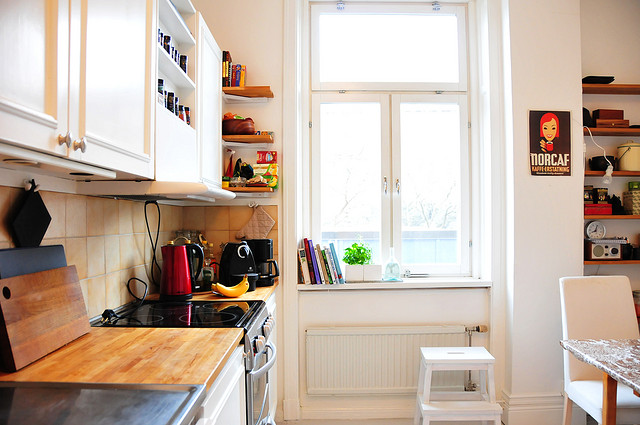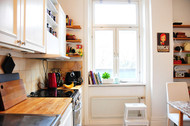How to Spring Clean without the Chemicals
Posted by Celtic Sustainables on 17th Mar 2021
 Spring is fast approaching, there is nothing quite like giving your home a thorough clean in preparation for the year ahead.
Spring is fast approaching, there is nothing quite like giving your home a thorough clean in preparation for the year ahead.
The idea of freshness that many companies would lead us to believe is the cleanest is really more of a chemical attack on your home. Don't believe the hype about extra muscle and scents of fresh air. A lot of the common cleaning products we see on the supermarket shelves and in our kitchen cupboards today are filled with dangerous chemicals which we and our families would do well to avoid.
With cases of eczema and asthma seemingly unstoppable in their increase it might be a wise idea to ditch the detergent now in favour of products and practices which are better for our health.
Worryingly there is a growing body of evidence that exposure to cleaning products can actually increases the likelyhood of getting asthma and other respiratory diseases. Ref: Bello 2010.
Which chemicals should we avoid, and why?
There are various nasties to look out for when picking cleaning products or anything else which is brought into the home.
Ingredients in some shop purchased cleaners like bleach and ammonia, (which create harmful compounds if mixed);
sodium hydroxide (often found in oven cleaners); amines (found in
polishes, wax strippers, and general purpose cleaners); and products
containing colophony (pine resin) and limonene (used in lemon scent)
actually trigger asthma attacks in some people. Some of the chemicals are Volatile Organic Compounds (VOCs). All of these common chemicals are bad for our health, and combined in the home are doing far worse than cleaning your kitchen surfaces. As well as having been shown to increase instances of asthma and eczema, these chemicals have been known to cause headaches, dizziness, and blurred vision as well as more serious health issues such as cancer and nervous system damage.
David Santillo, researcher at the University of Exeter, says homes are a “significant source of chemical exposure,” due to the rise in levels of harmful chemicals included in household products such as cleaners, furnishings, and common paints.
Santillo has undertaken research investigating hazardous chemicals in house dust as an indicator of chemical exposure in the home.
People friendly cleaning products
It is often best to revert to more traditional products in place of the more chemically laden modern developments. Old fashioned substances such as vinegar, lemon juice, bicarbonate of soda, and soap are much safer, cheaper, and equally effective as what most of us use today. These were all commonly used around the home only a few decades ago.

If you don't want to make your own cleaning solutions, then we totally recommend the following "Tough not Toxic" products from EcoSolutions (specialists in non-toxic cleaning products):
Grime Go, Surface Cleaner & Degreaser is a good all round spray cleaner.
Home Strip Super Strength PVCU Cleaner is perfect for cleaning PVC window frames.
Home Strip - Super Strength Degreaser is an eco and people friendly oven cleaner.
Six super healthy Spring Cleaning tips
1. Vacuum, Vacuum, Vacuum. Carpets and other soft furnishings are experts in the field of chemical harbouring. Absorbing harmful substances from the environment and gathering dust too, they can be a real allergy trigger. Something as simple as vacuuming more often will help maintain better air quality in the home whilst keeping nasty chemicals at bay.
2. Introduce some plants to the house. A number of house plants boast some quite brilliant detoxifying abilities. By helping to absorb chemicals such as formaldehyde from the air, they will help keep your atmosphere clean and fresh. They’re also very good at soaking up stray food smells from the kitchen. Read more about using plants in the home to clean the air.
3. Get rid of mould on walls. Damp and mould can affect your health so it's important to get rid of it. Once you have found the source of the problem and fixed it (see this handy article for sources of mold in the home). A dehumidifier can help solve condensation, damp and mould problems.
4. Stop mould from coming back. Stop mould from returning to your interior walls with the Auro Anti-Mould System (mould remover, mould stop and anti-mould paint) to treat the walls and stop it from growing back.
5. Clean decking, garden furniture, paths and paving with a non-bleach cleaner. Working with sunlight, you don't need to scrub or work hard to clean outdoors with Algon. Algon really works! It is safe for pets, children and wildlife.
6. Redecorate with VOC-free paint. All paints were not created equal, and some of the more common paints around today contain worryingly high levels of harmful chemicals known as VOCs. These chemicals can cause various respiratory problems, headaches, sickness, and other more serious health issues. However, there are some paints which have reverted to the good old fashioned formulae without anything nasty thrown in. Claypaint is water-based and contains natural clays, giving it a beautifully thick texture with excellent covering power and the full breathability needed for a healthy home. Graphenstone paints are very low VOC with only trace VOC levels in many of their paints and are more washable than the claypaint (so better suited to hallways, kitchens etc).
7. If you have allergies consider investing in an Air Purifier. They are great at capturing and removing Pollen, Dust, Smoke, Pet Dander, Mould Spores, Volatile Organic Compounds and General Household Odours from indoor air. They are easy to move from room to room and are quiet too.


